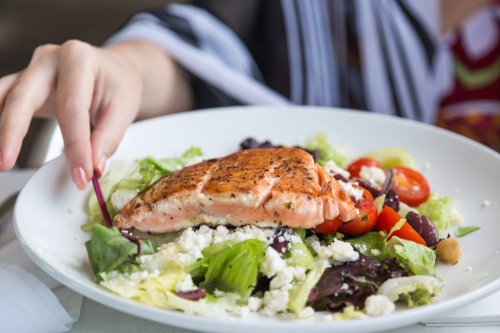I’ll always remember learning about the food pyramid during health class in fifth grade. The construction of the guide is unforgettable. Grains and cereals make up the foundation that supports fruits and veggies, and animal products and dairy, with fats, oils, salts, and sweets at the top. But times have changed. Fruits and vegetables now reign supreme; healthy fats are ubiquitous. And instead of relying on “serving sizes” (which aren’t at all eater-friendly), a new set of nutrition guidelines from the Harvard T.H. Chan School of Public Health focuses less on food group servings and more on the big picture of your day-to-day diet.
“Experts have tried to guide us over the years by recommending goals of daily food servings—such as five to eight servings of fruits and vegetables per day. But your idea of serving sizes may differ from someone else’s,” reads the article. “That’s led to confusion and, now, change.” The confusion part is too true. I can remember staring at my state-mandated school lunch wondering if the tomato sauce on my pizza counted as a serving of vegetable. (No, it does not.)
In response to former First Lady Michelle Obama’s “My Plate” program, Harvard’s own “healthy eating plate” calls for 50 percent vegetables and fruits (with vegetables taking up a slightly larger portion of the meal). A quarter of the plate is devoted to healthy protein and another quarter to whole grains. Everything looks pretty good besides the fact that healthy fats are noticeably absent from Harvard’s infographic. “Use healthy oils (like olive and canola oil) for cooking, on salad, and at the table. Avoid trans fats,” advises the site.
If you want to eat according to the specifics of daily food goals set forth by the Office of Disease Prevention and Health Services, nutritional needs will depend on your age and sex. For example, the recommendations for a female between the ages of 19 and 30 are a 2,000 calorie diet including 2.5 cups of vegetables, 1.5 cups of fruit, a half a cup of whole grains, 5 to 6 ounces of poultry, meat, or fish, 3 cups of dairy, and 1 to 2 tablespoons of healthy oils.
That’s why my favorite part about Harvard’s system is that it really encourages you to measure your nutritional intake in a way that cuts out the guesswork. A serving doesn’t look the same for everybody or every body—and that’s exactly how it should be. “Keep track of your food goals by using measuring cups or just eyeballing amounts,” says the Harvard Health letter.
Indeed, the less rigid instructions leave space in the kitchen for you to be creative, flexible, and, yes, a little bit zany with your dishes! “Make it an interesting mix,” recommends Harvard. “Sprinkle beans, nuts, and seeds in salads; add sautéed vegetables such as zucchini or tomatoes to an omelet; make a smoothie with berries, seeds, and bananas. It’s a fun and easy way to build toward your daily goals, and the reward is good health.” I, for one, am so glad the food pyramid now has a place in history books—not health class.
Now that it’s triple hot outside, these meals will keep you cool. Plus, the kitchen gadgets that are worth the $$$.
Sign Up for Our Daily Newsletter
Get all the latest in wellness, trends, food, fitness, beauty, and more delivered right to your inbox.
Got it, you've been added to our email list.











